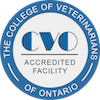 We perform many types of orthopedic (bone) surgeries in our clinic. Because we want to ensure that our patients receive the best possible outcome, we occasionally refer them to board-certified orthopedic surgeons to perform back surgery and other very complex surgeries.
We perform many types of orthopedic (bone) surgeries in our clinic. Because we want to ensure that our patients receive the best possible outcome, we occasionally refer them to board-certified orthopedic surgeons to perform back surgery and other very complex surgeries.
Leg fractures are the most common orthopedic problem presented at our clinic and usually result from a mishap with an automobile. They can be treated in a variety of ways depending on the location and type of fracture. We can apply a cast to treat certain fractures; however, many fractures will require surgical intervention:
- “Pinning” stabilizes the fracture by inserting a long stainless steel rod into the middle of the bone across the fractured area.
- “Plating” involves attaching a flat stainless steel plate to the bone using screws on either side of the fracture.
- “External fixation” stabilizes fractures using a series of pins on the outside of the leg that pass through the skin and into the bone on either side of the fracture.
Cruciate Repair
The most common injury of the knee is a rupture of the cranial cruciate ligament. When the CCL is torn, instability occurs that allows the bones to move in an abnormal fashion in relation to one another, causing damage to the joint cartilage.
In younger dogs, rupture of the CCL is usually the result of trauma to the stifle joint. In some cases, the ligament may only partially tear; however, this will eventually lead to complete tearing of the ligament. When CCL rupture occurs in older dogs, it is most frequently initiated by a progressive degenerative change in the ligament with eventual total rupture. A dog can simply be running in the back yard, plant the foot for a turn, and the ligament breaks.
A dog’s weight can be a strong contributing factor in a cruciate rupture. The ligament may become weakened due to carrying too much weight; this causes it to tear easily. Obesity will make the recovery time much longer, and it will make the other knee very susceptible to cruciate rupture.
Dogs with a ruptured CCL are usually lame and may refuse to bear weight on the affected leg. As the acute pain subsides, most dogs become more willing to bear weight, but some degree of lameness remains.
Small dogs may get enough stability in the joint to avoid surgery, but in most cases, correction of CCL rupture is going to require a surgical repair.
We also perform a lot of orthopedic surgeries related to hip dysplasia and disc disease. Please contact us if you have any questions about these procedures or if you think your pet might benefit from them.


